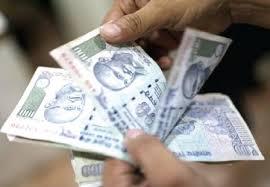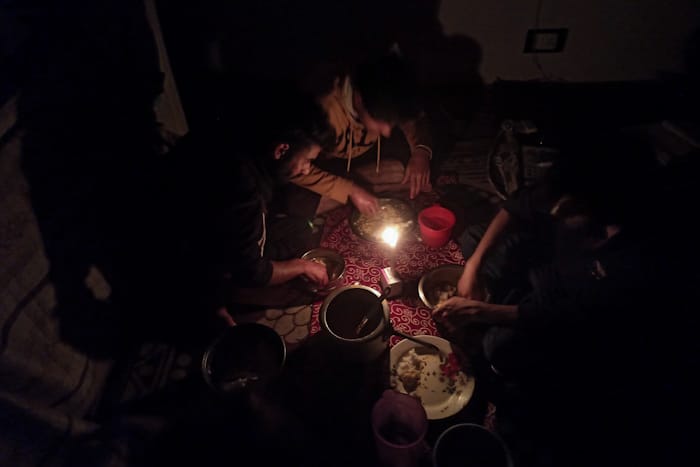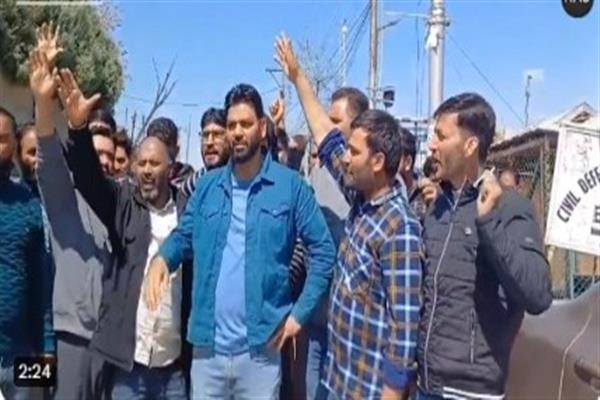 The Rs 80000-crore financial package announced by Prime Minister Narendra Modi in Srinagar on November 7 may have gratified the PDP-BJP coalition government in the State, but doesn’t extend any hope about stimulating Kashmir’s own economic strength, experts have opined, citing ‘failure’ of a host of previous such financial packages in Kashmir.
The Rs 80000-crore financial package announced by Prime Minister Narendra Modi in Srinagar on November 7 may have gratified the PDP-BJP coalition government in the State, but doesn’t extend any hope about stimulating Kashmir’s own economic strength, experts have opined, citing ‘failure’ of a host of previous such financial packages in Kashmir.The present financial package is the third such economic package announced for J&K since 2002 when the then Prime Minister AtalBihari Vajpayee announced Rs 8687 crore package envisaging 26 projects.
According to experts, a major share of the package was meant for defence roads and long-planned Udhampur-Srinagar railway line. Interestingly, this railway line—which has been marred by cost overruns—is still a dream to be realized.
RS 24,000 CRORE PMRP
Former Prime Minister Manmohan Singh’s Rs 24,000 crore Reconstruction Plan, the PMRP announced in 2004, had again little to do with bolstering Kashmir’s economic strength.
A substantial part of this package (Rs 18,000 crore) was actually granted to the National Hydroelectric Power Corporation (NHPC) while Rs 4500 crore was the Plan grant meant for the State. Out of the Rs 18000 crore, a big chunk was spent on construction of two central sector power projects namely Uri II and Kishenganga.
Besides, the package envisaged creation of 24,000 new jobs (14000 caretaker jobs of Anganwadicentres, 5000 jobs in CRPF and 5000 in India Reserve Battalion).
The projects envisaged in the Reconstruction Plan were/are implemented by the respective Administrative Ministries/Departments in consultation with the State Government.
The Reconstruction Plan initially included 67 projects/schemes covering 11 sectors of economy. Even after more a decade of its announcement, only 36 projects have been completed so far while preparation of proposals and approval is still under process in respect of two projects. Two projects have been dropped.
The progress on the implementation of the Reconstruction Plan is being monitored by Ministry of Home Affairs. At present approximate total outlay for PMRP projects is Rs 36,560 crore. The total release of funds for PMRP under State Plan for J&K from 2004- 05 to 2013-14 works out to just Rs 7,800 crore.
RS 301 CRORE PACKAGE
Earlier, in 1996, then Prime Minister H D DeveGowda announced Rs 301 crore package for Jammu and Kashmir. The substantial part of the package was primarily utilized towards waiver of small bad debts below Rs 50,000.
2008 PACKAGE
Again in 2008, based on the report and recommendations of Working Group-I on ‘Confidence building measures across segment of society in the State’, then Prime Minister Manmohan Singh announced a package primarily aimed at facilitating return and rehabilitation of Kashmiri migrants who had left Kashmir in wake of social strife.
“Although it was given out that the package is for Kashmir, it had hardly anything to bolster the economy of this place,” experts said.
The package envisaged one-time cash compensation of Rs 5 lakh to the families of the victims of militancy in lieu of employment; enhancement of pension to widows of civilians killed in militancy related violence; Financial assistance for the education of orphaned in militant violence. It also included a package for 1947 West Pakistan refugees comprising measures aimed at facilitating admission to their wards in professional and other educational institutions, bank loans without mortgage for taking up self-employment/business activities, vocational training for youth under the Skill development initiatives of the Ministry of Labour& Employment.
Among other components, it contained a package for 1947 refugees from PaK to meet their outstanding needs in respect of allotment of land and related rehabilitation measures.
The package included substantial financial allocation for return and rehabilitation of Kashmiri migrants “who wish to return to Valley.”
The main components of the package were: Housing Assistance @ Rs. 7.5 lakh per family for repair/reconstruction for fully or partially damaged houses. Assistance @ Rs. 2.00 lakh per family for dilapidated/ unused houses. Assistance @ Rs. 7.5 lakh per family for purchase/construction of a house in Group Housing Societies for those who have sold their properties during the period after 1989 and before the enactment of “The J&K Migrant Immovable Property (Preservation, Protection and Restraint of Distress Sale) Act, 1997” on May 30, 1997.
Other components included: One-time financial assistance of Rs 1 lakh to those having agriculture holdings; assistance @ Rs 5,000 per kanal, subject to maximum of Rs. 1.5 lakh for restoration of orchards; waiver of the interest component of the loans taken by Kashmiri Pandits before migration from the Valley.
According to the experts, none of these packages has in real sense helped bolster Kashmir own economic strength.
“These packages have been used for the purpose of political expediency by successive governments at the centre,” experts said.
According to experts, the real strength of Kashmir economy could have been ensured through the return of power projects to it. “Several influential agencies and committees have recommended return of NHPC power projects to the state, yet the central government has given not a hoot to such recommendations. Had these projects been returned to Kashmir that would have helped stimulate its own economic strength,” they said.
PRESENT PACKAGE
According to experts, in the present financial package also, “there is nothing really which would help Kashmir get rid of economic dependence.”
Professor Nissar Ali (Economist) said: “Like most of the earlier packages this so-called Rs 80,000 crore package is mere eyewash and a gimmick.”
Explaining, he said: “Of the Rs 24,000 crore package announced by then Prime Minister Manmohan Singh in 2004, over Rs 18,000 crore were given to NHPC for power generation in the state. Not for J&K, that package was actually a big boost for government of India in terms of power generation by NHPC in the state, which they are selling to Jammu and Kashmir against average annual cash payment of Rs 2,500 crore. It is the government of India which was benefitted by that package and not Jammu and Kashmir.”
“Similarly, this package will give a big boost to National Highway Authority of India and Border Roads Organization, both government of India owned organizations, as more than half of the package amount is meant for highway expansion and road projects.”
Professor Ali said: “The highways and road projects are developed all over India. Why these projects in Kashmir are given a name of package.”
Echoing similar views, social activist and former president FCIK ShakeelQalandar said: “Packages have always been sold to us in rehashed manner. The schemes contained in these packages most of the time remain same,” he added.
“The plans relating to railway and roads, for example, are there since 1948. Every government periodically announces them as packages for Kashmir, which in fact is not true,” he explained.
He added connectivity is a national problem. “To boost its economy, India has expanded road and railway connectivity to cities, towns and villages in rest of the country. But when it comes to Kashmir they are being rechristened as packages.”
“All these packages announced so far have failed to help create sustainable development and growth momentum in Jammu and Kashmir,” he said.






